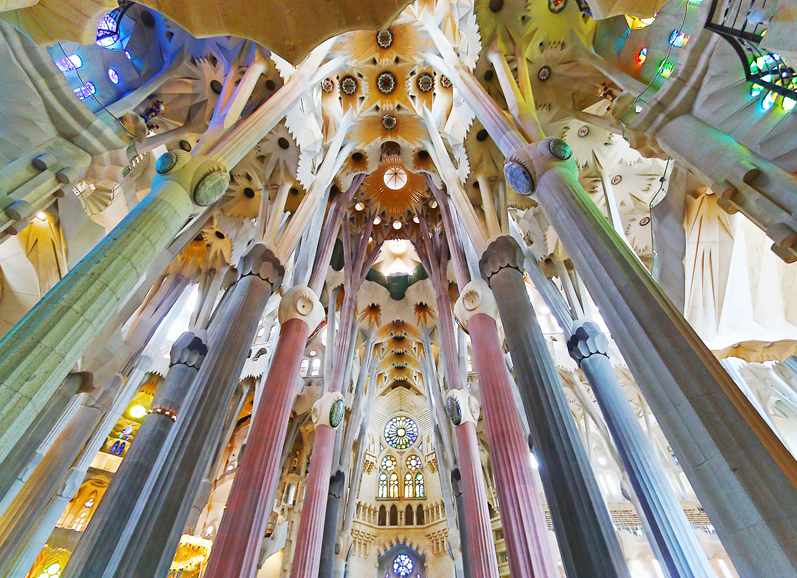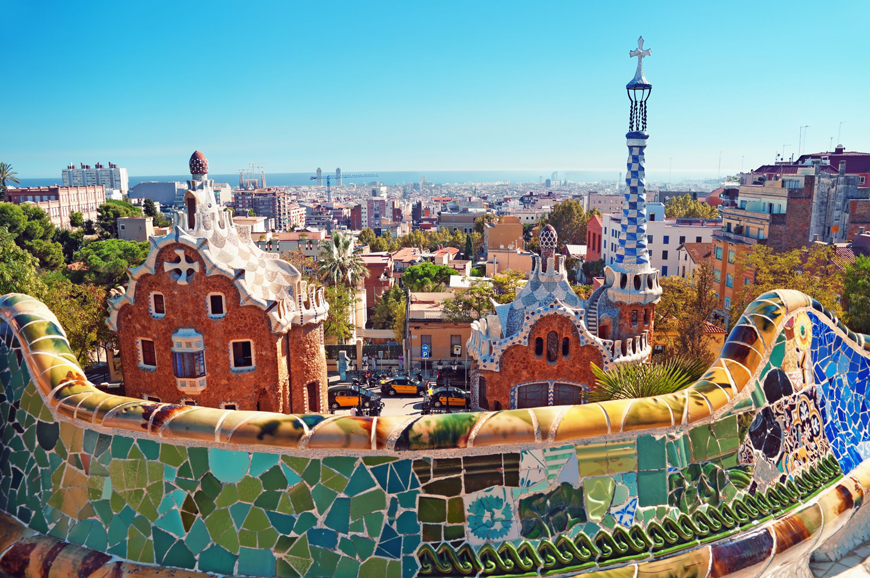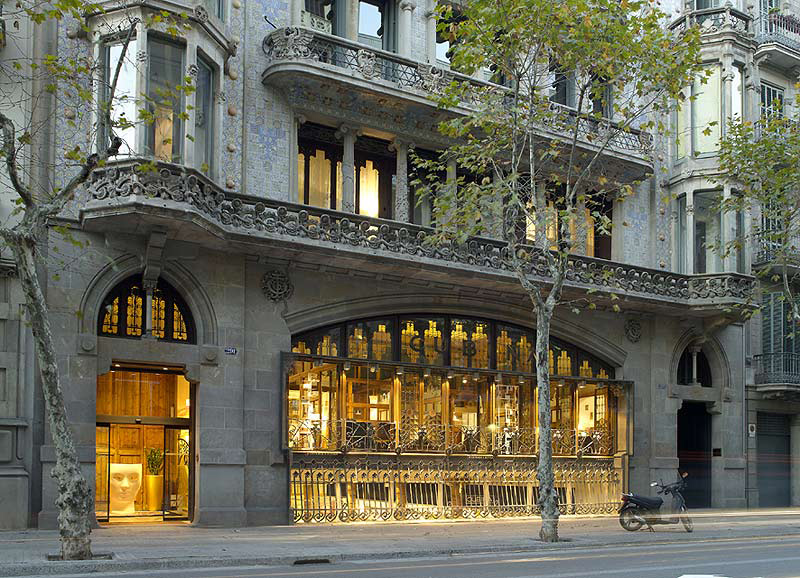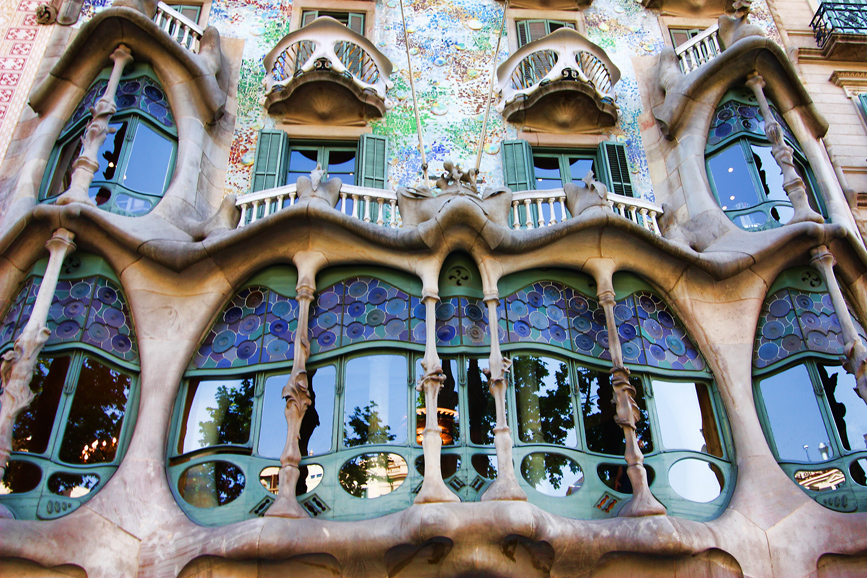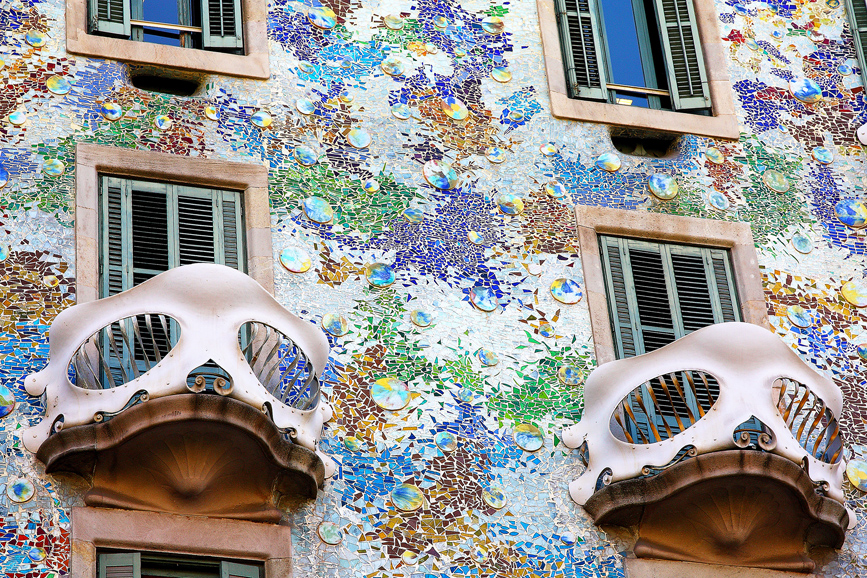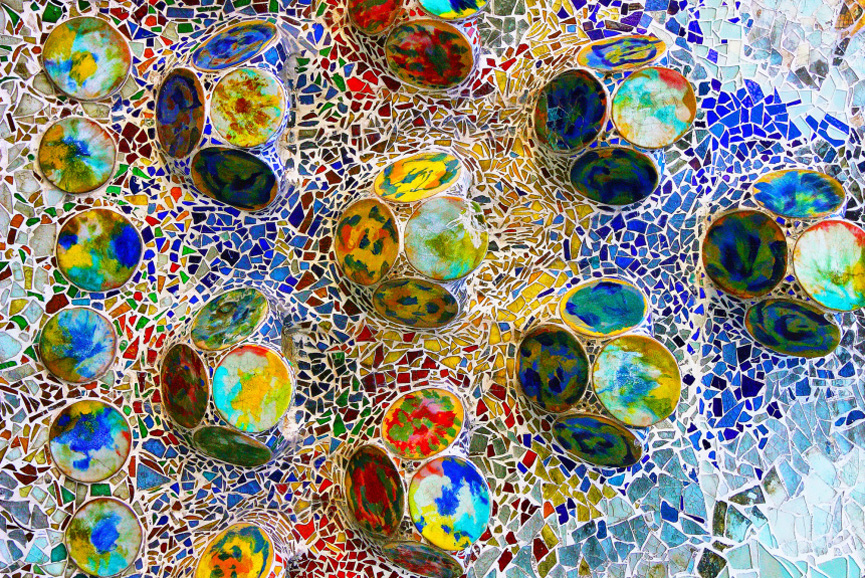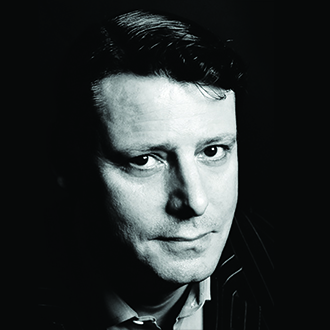Marching down Las Ramblas in her charcoal-grey Zara pantsuit, tiny feet wedged into her Camper Kobos, a Josep Font saddle-bag strapped to her back like a limpet, you can spot a Barcelonesa at 300 feet.
She’s feminine, confident, equally paid and liberal — an inhabitant of the world’s most design-led city and proud of it. Milan may just trump it for fashion, and Tokyo may have the edge when it comes to futurism, but for Modernism, Barcelona always wins hands down.
The man who established the city’s design creds was the wonderfully named Ildefonso Cerdà y Suñer. He laid out the Eixample District, the elegant 19th-century grid, with its unique octagonal corners, which not only gives the city light but also makes it exceptionally easy to navigate — at least north of Plaza Catalunya. In his wake came Antoni Gaudí, whose unfinished, elaborately embellished cathedral needs no introduction, and Josep Puig y Cadafalch (with a name to match Suñer), whose triumphs include the Palace of the Generalitat de Catalunya and the exquisite Casa Amatller. And let’s not forget Lluís Domènech y Montaner and his glorious Palau de La Música Catalana, to name but one of his Modernist masterpieces. In effect these architects were the decorators in a city already beautiful in its design.
But what propelled Barcelona into the modern age — it’s now the most visited city in Europe after Paris and London — was undoubtedly the 1992 Olympics. Pasqual Maragall, the then-mayor, opened up the waterfront, which had always been ignored, and almost overnight changed Barcelona’s consciousness from a city that traditionally had its back to the water to one that reveled in its perfect location. And make no mistake, it is perfectly located — on the shores of the Mediterranean, a mere 90 minutes’ drive from the snowcapped mountains of the Pyrenees. Spanish operatic soprano Montserrat Caballé and rocker Freddie Mercury teamed for the eponymous song to the city, Whit Stillman made the movie and later Barcelona exploded into the millennium, when it would one day ultimately be celebrated by Woody Allen in “Vicky Cristina Barcelona.” The success of the city’s soccer club, FC Barcelona, which enjoyed near mythical status in Europe, didn’t hurt either. There was no turning back.
The public transportation system, already one of the best in Europe, was upgraded and, in the last 10 years, the seedy and often dangerous neighborhoods of the Born and Raval have been reinvented. The state-of-the-art Maremagnum leisure complex — out by the harbor — was built on reclaimed land in the 1990s. A quarter of a century on, it continues to expand.
And culturally, of course, the city is a cornucopia, with its two symphony orchestras, three world-class concert halls and one of the world’s most enchanting opera houses. It’s a jazz hub, too, and there can’t be many an old rocker or new rapper who doesn’t jump at the chance of a gig in the Ciudad Condal, or City of Counts, to give it its local nickname.
Barcelona has more museums per capita than New York and twice as many bars per capita as Berlin. It’s a powerhouse of Modern art. Throw in the legacies of Pablo Picasso and Joan Miró and it’s irresistible. As a tourist, there’s far more than you can hope to cover in a week or even a month, but you can start by scratching the surface. And remember, a scratch in Barcelona is like an excavation in any other city.
No one’s going to go hungry either in this town. From hole-in-the-wall dive to molecular lab to fine-dining flash, the city’s restaurants are at the forefront of the new Spanish gastronomy. (Tickets — run by chef Ferran Adrià’s brother, Albert — and the part-experimental Alkimia are the current hot restaurants, but blink and this will have changed.) And as for where to lay your head at night — not that you’ll be getting much sleep, as clubbing doesn’t finish until 6 a.m. — the city is bursting at the seams with “design” hotels. Some, frankly, are ridiculous, ergonomically sadistic torture chambers, where innovative design for its own sake has replaced common sense. But others like the Mercer and the Neri are jewels, referencing heritage while looking confidently ahead. This year’s eagerly awaited new opening is Almanac Barcelona, which promises zingy, latter-day design in addition to creating “sensory perceptions” for its guests. Watch this space.
Yes, you’ve guessed it. I love Barcelona probably more than any city on earth, which is why I seldom write about it. A paean or ode I can understand, but going behind the scenes, sharing tips, revealing secrets? That’s surely kiss-and-tell stuff. So that’s why I won’t be telling you about the unimaginably lovely Hivernacle, or winter botanical garden, or the gob-smacking view from the military fortress at the top of Montjuïc, or the Dry Martini bar on Carrer Aribau — surely the most beautiful cocktail bar in the world.
I won’t mention the Hotel Palace, one of the “original” Ritzes, founded by César Ritz himself, in 1919 (or how my wife and I were able to rent a room for three hours one sunny Saturday in September 1997, not for any illicit purpose, but to watch the funeral of Princess Diana on television). And I’m not even going to whisper that Barcelona is where our twin boys were conceived, or where we watched dazzlingly spectacular fireworks from the roof of our apartment on the eve of the millennium. And where, exactly a year later on another New Year’s Eve, just as promised, we saw newly minted, never-before-seen euros slip effortlessly out of the ATM when we popped in our card and PIN on the stroke of midnight.
Barcelona is too vivid, too thrilling, too exotic, too design-filled and, occasionally even, too silly — but above all too personal — to share. I want to keep it to myself.
So whatever you do, please don’t go.

